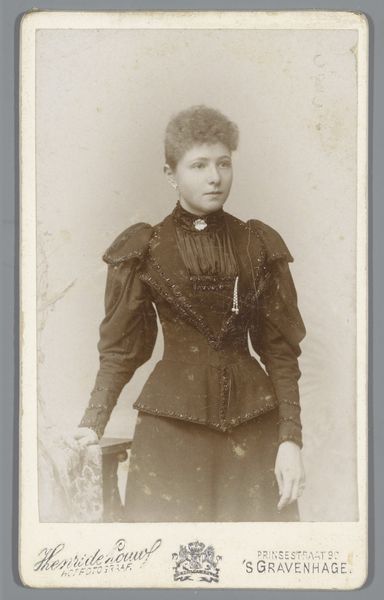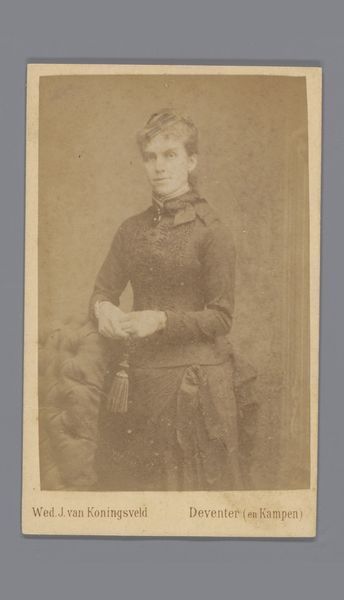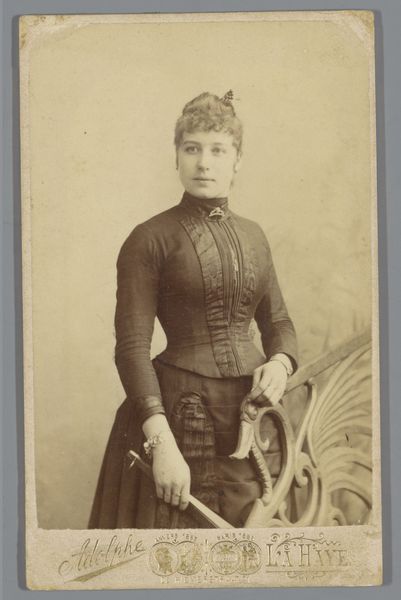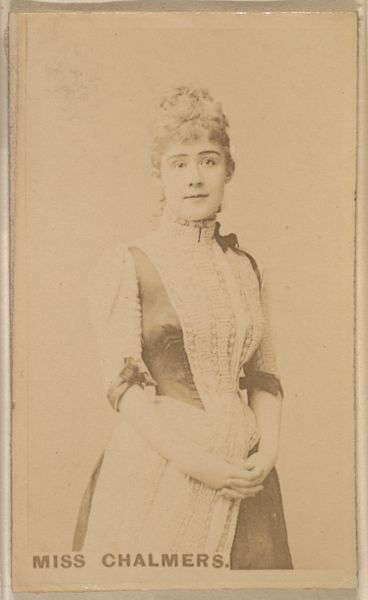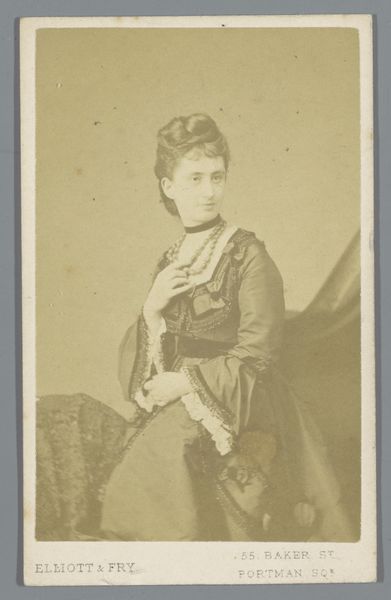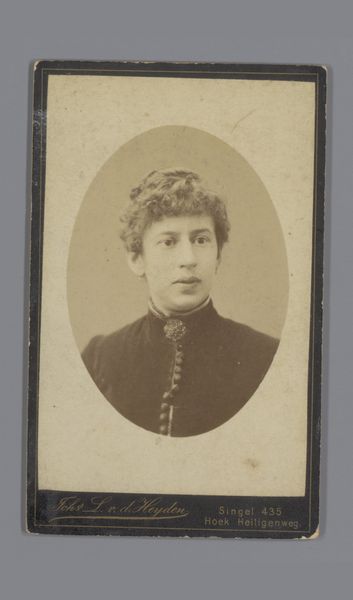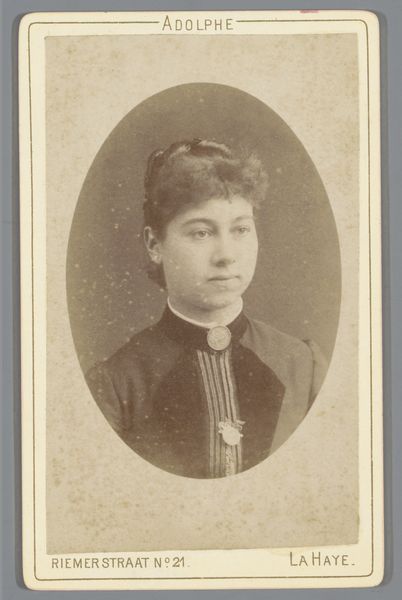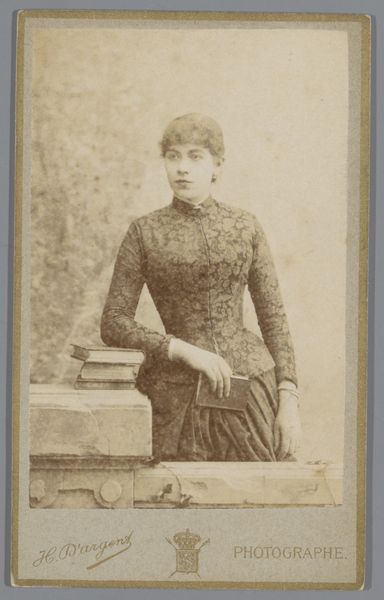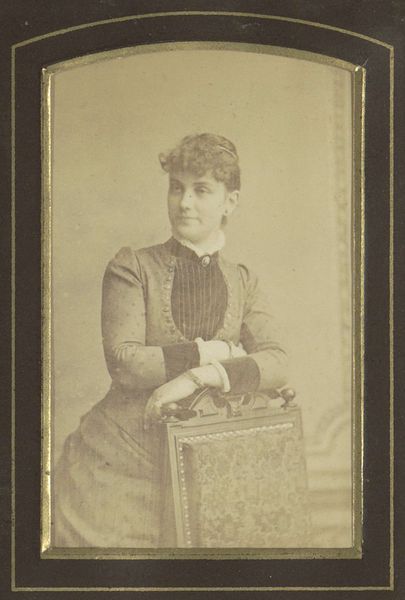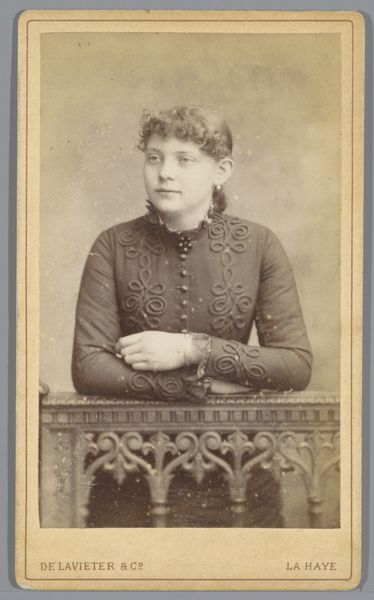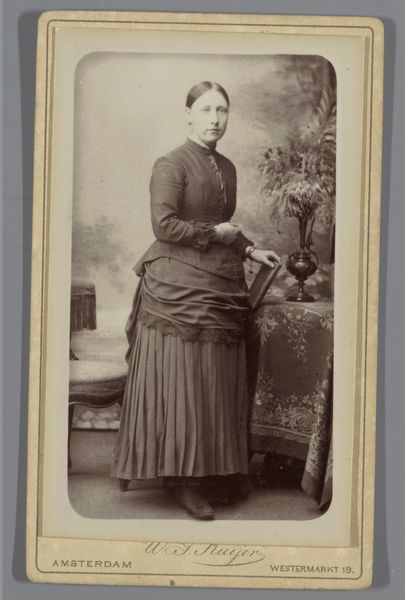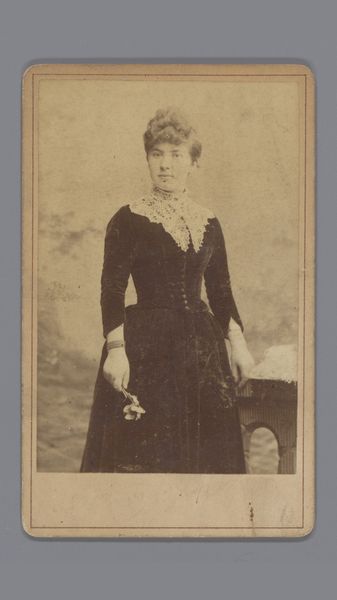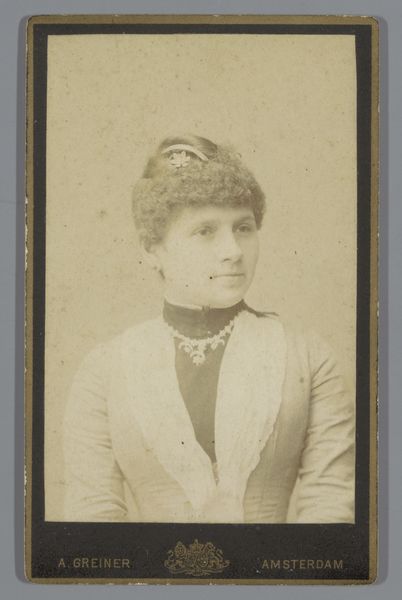
photography, albumen-print
#
portrait
#
aged paper
#
toned paper
#
photography
#
coloured pencil
#
framed image
#
underpainting
#
albumen-print
#
realism
Dimensions: height 103 mm, width 64 mm
Copyright: Rijks Museum: Open Domain
Curator: We’re looking at “Portrait of an Unknown Woman,” a photograph created by Heinrich Wilhelm Wollrabe sometime between 1877 and 1885, currently held here at the Rijksmuseum. Editor: Oh, she has kind eyes! A bit melancholic, maybe? It’s quite charming, almost like peering into a vintage daydream. Curator: Indeed. What makes this albumen print particularly interesting is the overpainting, particularly with coloured pencils. It’s a blend of mechanical reproduction and hand-worked craft. The material itself, the toned and aged paper, contributes to our understanding, doesn't it? It speaks volumes about photographic practices of the late 19th century and the evolving relationship between photography and fine art. Editor: Absolutely! I'm drawn to the intimacy of the setting. A faux architectural flourish there, it seems like, staged—perhaps intended to elevate the sitter, or simply reflecting the artificiality of constructed identities in the studio? Her clothes are quite striking; who designed them, who made them? These textures tell their own stories, of labour and class… Curator: Precisely! Understanding who produced this photographic image and under what conditions gives insight into broader socio-economic contexts of art production. How does the means of its production shape our reading? I mean, consider albumen prints: they weren't created solely by the artist who owned the name. There was a whole industry surrounding the making of photographs in that era. Editor: I am now imagining an entire ecosystem; people who crafted those backdrops, mixed the chemicals... Even the invisible labour implied here creates an interesting counterpoint to the “high art” illusion she inhabits within the image. There's an inherent narrative tucked within the seams, both real and invented! Curator: Well said. Thinking about this “Unknown Woman’s” representation of herself via garments and jewelry reminds me that, even without an identified sitter, the social is still evident in Wollrabe's process. Editor: I think I leave with even more mystery swirling around her, enhanced by our dual gaze! It's nice when art history sparks the imagination, not just the intellect, right?
Comments
No comments
Be the first to comment and join the conversation on the ultimate creative platform.
